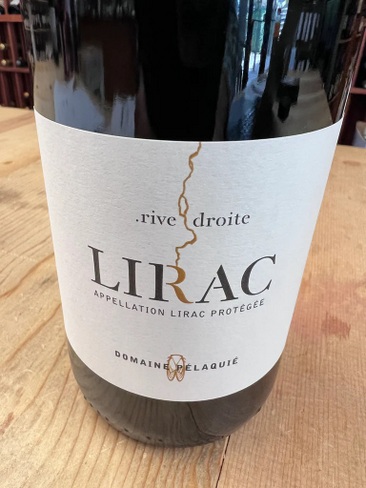 Pélaquié Lirac – Sustainable
Pélaquié Lirac – Sustainable
Domaine Pélaquié is a family-run estate with a long history; the estate has been passed down father to son for generations, cultivating the same land all the way back to the 16th century! The current son in charge, Luc Pélaquié, has modernized the winery, all the while protecting the traditions of his ancestors. He practices sustainable viticulture, certified by HVE, on his 250 acres of vines located in the Côtes-du-Rhône, Laudun, Tavel, and Lirac.
Lirac (pronounce it LEE rock) is in the Southern Rhône and sits west of the Rhône River. Wine grapes have been grown here since the middle ages. While they make reds, whites and rosé in the region, you will primarily find red wines made here (87%).
Lirac is the southernmost cru within the Rhône and has been an appellation since 1947. They have some of the most stringent specifications in the region. The area sits in the Gard department and is out of the way from the traffic in the Rhône Valley. Off the beaten path, and across the river from Châteauneuf-du-Pape, it has remained out of the spotlight in the Rhone and a bit of a secret.
Lirac’s 1,700 acres of vineyard are essentially the other half of Chateauneuf du Pape. Lirac sits on the West bank of the Rhone River, opposite Chateauneuf.
The climate and subsoil are essentially identical to Chateauneuf, and – like Chateauneuf – most of the vineyards are covered in large, rounded stones called “galets” left behind by the Rhone when it filled the entire valley in ancient times. When the Papacy arrived in Avignon in the early 1300s and began searching out sources of wine for communion and celebration, Lirac was quickly identified as the source of the very finest wine in the region. We know that Pope Innocent IV paid a premium for the 20 casks of Lirac he purchased in 1357.
90% Grenache, 30% Mourvedre. Sustainably farmed. 90 points, Parker: “The medium to full-bodied 2017 Lirac starts with scents of black olive, but then those blend easily into red fruit flavors on the palate. Most impressive is the rich,velvety texture, which lingers elegantly through the long finish.”


